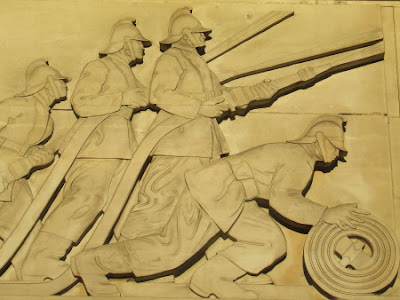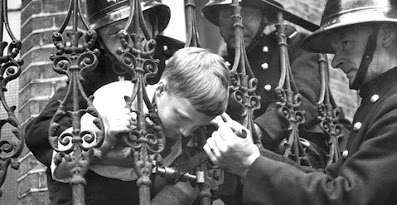On the night of Dec. 29-30, 1940, London suffered the "Second Great Fire" - timed by German raiders to coincide with low tide on the River Thames and run the fire brigade's water supply dry.
Fourteen firefighters died and 250 were injured in the destruction that stretched south from Islington to St Paul's Cathedral, scorching an area greater than that of the Great Fire of London of 1666.
Nazi bombers dropped more than 24,000 high explosives and 100,000 incendiaries, leveling historic buildings and gutting the medieval Great Hall of the City's Guildhall.
The firestorm destroyed 19 churches, 31 guild halls and ravaged Paternoster Row, center of the London publishing trade where an estimated 5 million books were lost in the flames.
As the flames approached St Paul's Cathedral, a symbol of London's glory, Prime Minister Winston Churchill called of the Fire Brigade and St. Paul's fire watch to save the landmark - and they did.
The famous photograph "St Paul's Survives" (above) was snapped from the roof of the Daily Mail by Herbert Mason.
Fourteen firefighters died and 250 were injured in the destruction that stretched south from Islington to St Paul's Cathedral, scorching an area greater than that of the Great Fire of London of 1666.
Nazi bombers dropped more than 24,000 high explosives and 100,000 incendiaries, leveling historic buildings and gutting the medieval Great Hall of the City's Guildhall.
The firestorm destroyed 19 churches, 31 guild halls and ravaged Paternoster Row, center of the London publishing trade where an estimated 5 million books were lost in the flames.
As the flames approached St Paul's Cathedral, a symbol of London's glory, Prime Minister Winston Churchill called of the Fire Brigade and St. Paul's fire watch to save the landmark - and they did.
The famous photograph "St Paul's Survives" (above) was snapped from the roof of the Daily Mail by Herbert Mason.























